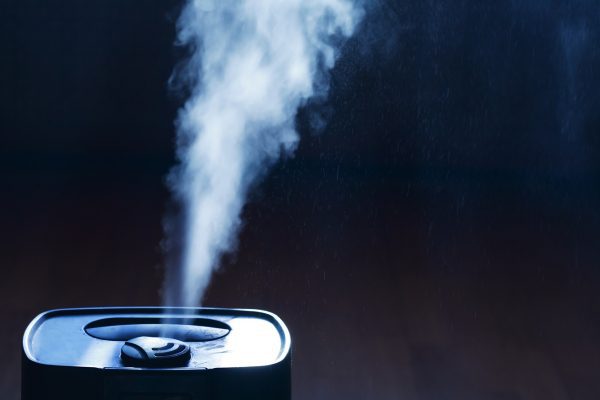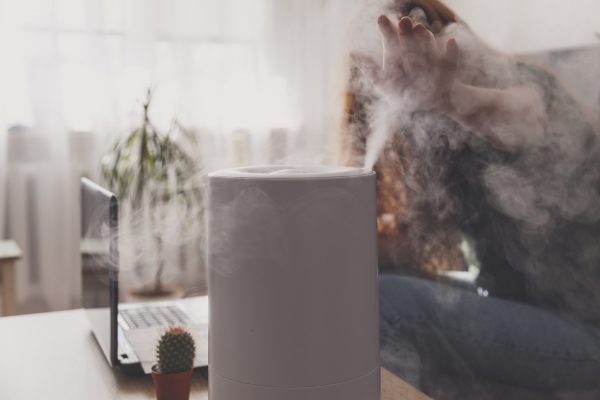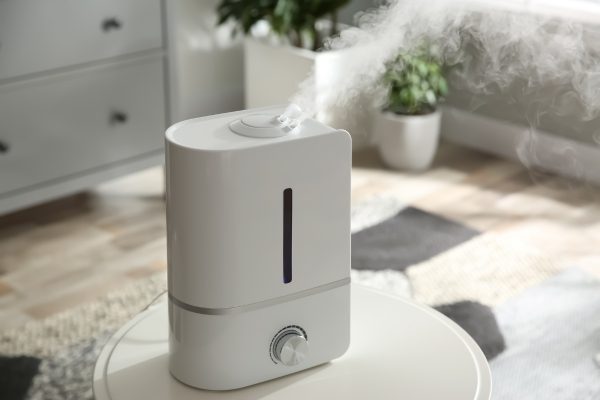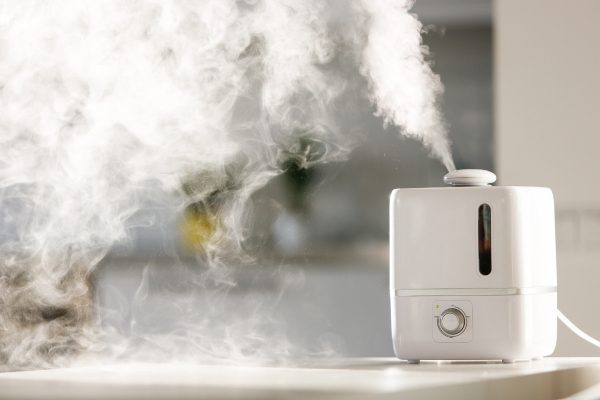

Many people wonder whether it’s safe to leave their humidifier running throughout the night. The simple answer is yes, running your humidifier all night is perfectly safe and often beneficial when done correctly. With proper maintenance, correct placement, and appropriate humidity levels, overnight humidifier use can significantly improve your sleep quality, reduce respiratory issues, and create a healthier bedroom environment.
This comprehensive guide covers everything you need to know about running your humidifier overnight, including optimal runtime recommendations, safety guidelines, health benefits, and expert tips to maximize effectiveness while avoiding common pitfalls. Whether you’re dealing with dry winter air or seeking better sleep quality, you’ll find the answers you need for safe, effective overnight humidification.

Running your humidifier all night is not only safe but recommended by many health experts, provided you follow essential safety guidelines. Modern humidifiers are designed for continuous operation and include safety features like automatic shut-off when the water tank empties, making them suitable for overnight use.
The key to safe overnight operation lies in maintaining proper humidity levels between 30% and 50%, as recommended by the Environmental Protection Agency. This range prevents both the discomfort of dry air and the risks associated with excessive moisture. Most quality humidifiers now include built-in humidistats that automatically regulate output to maintain your desired humidity level.
Safety depends primarily on three factors: regular maintenance, proper placement, and using the right type of water. Clean your humidifier every 2-3 days during regular use, position it on a stable surface away from electronics and bedding, and follow manufacturer guidelines for water type. With these precautions in place, overnight humidifier use poses no significant risks and offers numerous health benefits.
The benefits of running a humidifier overnight far outweigh potential concerns when proper guidelines are followed. From improved respiratory health to better skin hydration, the advantages make overnight use particularly valuable during dry seasons or in climate-controlled environments.
Optimal humidity levels dramatically improve sleep quality by preventing the discomfort associated with dry air. When air moisture drops below 30%, your throat and nasal passages dry out, leading to irritation that disrupts sleep. Running a humidifier overnight maintains consistent moisture levels, allowing for more restful, uninterrupted sleep.
Snoring often worsens in dry conditions because dehydrated tissues in the throat and nasal cavities vibrate more intensely. The added moisture from overnight humidification lubricates these tissues, reducing vibration and subsequently decreasing snoring volume and frequency. Many users report both they and their partners experience better sleep quality after introducing overnight humidification.
The white noise effect created by a quietly operating humidifier provides an additional sleep benefit. This consistent, gentle sound masks disruptive environmental noises and has been shown to help people fall asleep faster and maintain deeper sleep cycles throughout the night.
Your skin loses moisture continuously through a process called transepidermal water loss (TEWL), which accelerates significantly in dry environments. Running a humidifier overnight helps maintain optimal moisture levels in the air, reducing TEWL and keeping your skin hydrated while you sleep.
This overnight moisture retention is particularly beneficial for those with dry, sensitive, or aging skin. The consistent humidity prevents the tight, itchy feeling associated with dry skin and can reduce the appearance of fine lines caused by dehydration. Many dermatologists recommend overnight humidification as part of a comprehensive skincare routine.
For those suffering from eczema or other skin conditions, maintaining proper humidity levels overnight can significantly reduce flare-ups and discomfort. The continuous moisture helps preserve the skin’s natural barrier function, preventing irritation and promoting healing.
Dry air causes the cilia (tiny hair-like structures) in your nasal passages to become less effective at filtering out dust, allergens, and pathogens. Overnight humidification keeps these natural defense mechanisms functioning properly, reducing your susceptibility to respiratory infections and allergies.
Sinus congestion often worsens at night due to lying flat combined with dry air. Running a humidifier helps thin mucus secretions, allowing for better drainage and easier breathing. This relief is particularly valuable for those suffering from chronic sinusitis, allergies, or recovering from upper respiratory infections.
The moisture also soothes irritated throat tissues, reducing nighttime coughing and throat clearing that can interrupt sleep. For those with asthma, properly humidified air can help reduce triggers and make breathing more comfortable throughout the night.
Research published in the Annual Review of Virology demonstrates that low humidity levels increase both the survival rate and transmission of airborne viruses. Maintaining humidity between 40% and 60% creates an environment less favorable to viral survival, potentially reducing your risk of catching colds and flu.
The body’s immune response also functions more effectively in properly humidified environments. Dry air can compromise the mucous membranes that serve as your first line of defense against pathogens. Overnight humidification helps maintain these protective barriers, supporting your immune system while you sleep.
During cold and flu season, running a humidifier all night becomes even more valuable. The consistent moisture helps your body maintain its natural defenses when they’re needed most, potentially reducing both the likelihood of infection and the severity of symptoms if you do become ill.
The ideal runtime for overnight humidifier use typically ranges from 8 to 12 hours, aligning with average sleep duration. However, the exact runtime depends on several factors including room size, starting humidity levels, outdoor conditions, and your humidifier’s output capacity.

During winter months when heating systems create extremely dry indoor air, you may need to run your humidifier continuously throughout the night and even into daytime hours. In contrast, during humid summer months or in naturally humid climates, you might only need 4-6 hours of operation to maintain comfortable levels.
Modern humidifiers with built-in humidistats offer the most efficient solution, automatically cycling on and off to maintain your desired humidity level. This prevents over-humidification while ensuring consistent comfort throughout the night. If your humidifier lacks this feature, starting with 8 hours of runtime and adjusting based on morning humidity readings provides a good baseline.
Room size significantly impacts runtime requirements. A small bedroom humidifier might effectively maintain humidity in a 300-square-foot space with 8 hours of operation, while larger rooms or those with poor insulation may require longer runtime or a higher-capacity unit. Always match your humidifier’s output capacity to your room size for optimal performance.
The Environmental Protection Agency recommends maintaining indoor humidity between 30% and 50%, with many health experts suggesting the 40-60% range offers optimal comfort and health benefits. These guidelines apply specifically to overnight bedroom humidity, where you spend approximately one-third of your time.
Humidity below 30% leads to dry skin, irritated sinuses, increased static electricity, and higher susceptibility to respiratory infections. Conversely, levels above 60% create ideal conditions for mold growth, dust mite proliferation, and potential structural damage to your home. Maintaining the recommended range protects both your health and your property.
Individual comfort within this range varies based on personal preference and health conditions. Those with respiratory issues might prefer levels closer to 50%, while others find 40% more comfortable. Experiment within the safe range to find your optimal overnight humidity level.
Accurate humidity monitoring is essential for safe overnight humidifier use. Digital hygrometers provide the most reliable readings and many models include features like high/low memory functions and humidity trend indicators. Place your hygrometer at bed height, away from the humidifier’s direct output, for the most accurate readings.
Many find it helpful to check humidity levels before bed and upon waking to understand their overnight humidity patterns. This data helps you adjust runtime and output settings for optimal comfort. Some advanced hygrometers can even connect to smartphone apps, allowing you to track humidity trends over time.
For those using non-toxic humidifiers with built-in humidity sensors, remember these readings may differ from room ambient humidity. Using a separate hygrometer ensures accurate monitoring and helps you maintain safe humidity levels throughout your bedroom.
Recognizing over-humidification signs prevents potential problems before they become serious. The most obvious indicator is condensation on windows, which signals humidity levels exceeding recommended ranges. This excess moisture can lead to mold growth around window frames and walls if not addressed promptly.
Musty odors often indicate excessive humidity fostering mold or mildew growth, even if not yet visible. Pay attention to any unusual smells, particularly in corners, closets, or areas with poor air circulation. A damp, heavy feeling in the air or waking up feeling stuffy also suggests humidity levels are too high.
Physical symptoms of over-humidification include increased allergy symptoms, difficulty breathing, or waking with congestion despite not being ill. If you notice any of these signs, reduce humidifier runtime, improve room ventilation, or adjust your target humidity level downward until symptoms resolve.

Strategic humidifier placement ensures both safety and effectiveness during overnight use. Position your unit on a flat, water-resistant surface at least 2 feet off the ground for better mist distribution and to keep it away from curious pets or children. Nightstands or dressers work well, provided they’re stable and away from the bed’s edge.
Maintain at least 12 inches of clearance from walls, curtains, and electronics to prevent moisture damage. The mist should disperse freely into the room rather than concentrating on any surface. Avoid placing humidifiers directly on carpets or wooden floors without protective waterproof mats underneath.
For optimal bedroom coverage, position the humidifier near the center of the room rather than in corners where air circulation is limited. However, keep it at least 3 feet from your bed to prevent excessive moisture exposure while sleeping. This distance allows for even humidity distribution while avoiding the discomfort of direct mist contact.
Consistent maintenance is crucial for safe overnight humidifier operation. Empty and refill the water tank daily, even if water remains, to prevent bacterial growth. This simple step significantly reduces the risk of dispersing harmful microorganisms into your bedroom air while you sleep.
Clean your humidifier thoroughly every 3 days during regular use, following manufacturer instructions. Most units benefit from a vinegar solution cleaning to remove mineral deposits and a diluted bleach rinse (followed by thorough water rinsing) to eliminate bacteria and mold. Pay special attention to any areas where water sits or flows.
Replace filters according to manufacturer recommendations, typically every 1-3 months for units in nightly use. Dirty filters not only reduce efficiency but can harbor bacteria and mold. Keep spare filters on hand to ensure you never run your humidifier with a compromised filter.
The type of water you use significantly impacts both humidifier performance and your health. While many units require distilled water to prevent mineral buildup and white dust, some modern humidifiers feature advanced filtration systems that allow tap water use. Always consult your device manual for specific water requirements.
Using distilled or demineralized water offers several advantages for overnight operation. It eliminates white dust (mineral deposits) on furniture and reduces the frequency of deep cleaning required. For those with non-toxic cleaning products preferences, distilled water minimizes the need for harsh descaling chemicals.
If using tap water in compatible units, be aware that mineral content varies by location. Hard water areas may require more frequent cleaning and filter changes. Some users find that filtered tap water offers a good compromise between the cost of distilled water and the maintenance needs of straight tap water.
Running humidifiers in children’s rooms requires additional safety considerations. Always use cool-mist humidifiers rather than warm-mist models to eliminate burn risks. Position units well out of reach and secure cords to prevent tripping or pulling accidents.
A critical safety warning for parents: Never close the door completely when running a cool-mist humidifier in a young child’s room. Some safety guides warn this can create excessive humidity in enclosed spaces, potentially increasing SIDS risk. Instead, leave doors slightly ajar to ensure proper air circulation.
Monitor children’s rooms more carefully for signs of over-humidification, as smaller spaces can reach excessive humidity levels more quickly. Consider using a humidifier with an automatic shut-off feature and a built-in hygrometer for added safety. Regular cleaning becomes even more critical in children’s rooms to prevent any bacterial or mold exposure.
Understanding and avoiding common mistakes ensures safe, effective overnight humidifier use. These errors can reduce benefits, create health risks, or damage your home, but they’re all easily preventable with proper knowledge and attention.
Table: Common Overnight Humidifier Mistakes and Solutions
| Mistake | Consequences | Solution |
|---|---|---|
| Not monitoring humidity levels | Over-humidification, mold growth | Use a hygrometer, aim for 30-50% |
| Placing too close to bed | Excessive moisture exposure, discomfort | Keep 3+ feet from sleeping area |
| Skipping daily water changes | Bacterial growth, poor air quality | Empty and refill tank every day |
| Using wrong water type | White dust, mineral buildup | Follow manufacturer water guidelines |
| Ignoring cleaning schedule | Mold/bacteria dispersal | Clean every 2-3 days of use |
| Wrong size for room | Ineffective or excessive humidity | Match capacity to room square footage |
| Poor ventilation | Moisture accumulation, stuffiness | Ensure adequate air circulation |
| Closing door in child’s room | Potential safety risks | Keep door slightly open |
The most critical mistake is assuming “set it and forget it” operation. While modern humidifiers offer convenience features, they still require daily attention to operate safely. Developing a simple routine of checking water levels, monitoring humidity, and performing regular maintenance prevents most problems.
Another frequent error involves running humidifiers continuously without breaks, even when humidity levels are adequate. This wastes water and energy while potentially creating uncomfortable conditions. Use humidity readings to guide operation rather than running automatically every night regardless of conditions.
Winter presents the greatest need for overnight humidification due to heating systems that drastically reduce indoor humidity. During peak winter months, running your humidifier for 12-16 hours or even continuously may be necessary to maintain comfortable humidity levels between 30-50%.
Cold outdoor air holds less moisture, and when heated indoors, relative humidity plummets. You might notice static shocks, dry skin, and increased respiratory discomfort without adequate humidification. Start with overnight operation and extend runtime if morning humidity readings remain below 30%.
Monitor your home’s specific needs, as factors like insulation quality, heating type, and outdoor temperatures all influence required runtime. Well-insulated modern homes may need less runtime than older, drafty houses. Adjust your approach based on comfort and hygrometer readings rather than following rigid schedules.
Summer typically requires minimal to no overnight humidifier use in most climates. Air conditioning removes some moisture, but outdoor humidity often keeps indoor levels within comfortable ranges. Use your hygrometer to determine if any humidification is needed rather than running automatically.
Spring and fall present unique challenges as outdoor humidity fluctuates dramatically. You might need overnight humidification one week and none the next. Stay flexible and responsive to changing conditions. These transitional periods are excellent times for thorough humidifier maintenance in preparation for heavy winter use.
In humid climates, you may never need overnight humidification during summer months. In fact, you might need a dehumidifier instead. Always prioritize actual humidity readings over seasonal assumptions, as local climate variations and home characteristics create unique moisture patterns.
Selecting an appropriate humidifier for bedroom use requires considering several key features that enhance safety and convenience during overnight operation. The most important feature is an automatic shut-off function that stops operation when the tank empties, preventing motor damage and ensuring safety.

A built-in humidistat ranks as the second most valuable feature, automatically maintaining your desired humidity level without manual intervention. This prevents over-humidification while ensuring consistent comfort throughout the night. Models with digital displays showing current humidity levels offer added convenience for monitoring.
Table: Essential Features for Overnight Humidifier Use
| Feature | Benefit | Priority |
|---|---|---|
| Auto shut-off | Safety when tank empties | Essential |
| Built-in humidistat | Maintains set humidity automatically | Highly recommended |
| Quiet operation (<30dB) | Won’t disturb sleep | Important |
| Large tank capacity | 8+ hours runtime | Important |
| Cool mist option | Safer for bedrooms | Recommended |
| Night light/display dimmer | Won’t disrupt sleep | Nice to have |
| Easy-clean design | Encourages maintenance | Recommended |
| Timer function | Scheduled operation | Helpful |
Cool-mist humidifiers generally work better for overnight bedroom use than warm-mist models. They eliminate burn risks, use less energy, and don’t raise room temperature, which can disrupt sleep. However, warm-mist models may be preferable in very cold climates where the slight temperature increase is welcome.
Tank capacity directly impacts how long your humidifier can run without refilling. For uninterrupted overnight operation, choose models with tanks large enough to provide 10-12 hours of runtime at your typical output setting. This prevents middle-of-the-night shutoffs and ensures consistent humidity until morning.
White dust appearing on furniture indicates mineral deposits from tap water evaporation. This harmless but annoying residue occurs when using hard water in ultrasonic humidifiers. Switch to distilled water or consider a humidifier with demineralization cartridges to eliminate this issue completely.
Noise complaints rank among the most common overnight humidifier problems. While some white noise aids sleep, excessive gurgling, buzzing, or fan noise disrupts rest. Place humidifiers on soft, stable surfaces to reduce vibration, ensure proper water levels, and consider upgrading to models specifically designed for quiet bedroom operation.
Window condensation signals excessive humidity requiring immediate adjustment. Reduce runtime, lower output settings, or improve room ventilation to resolve this issue. Persistent condensation can damage window frames and create mold growth conditions. Installing a bathroom exhaust fan or improving overall home ventilation may help in severe cases.
For persistent problems despite troubleshooting, consider whether your humidifier matches your room’s needs. An undersized unit running constantly may never achieve comfortable humidity, while an oversized unit may create excessive moisture even on low settings. Proper sizing ensures effective, trouble-free overnight operation.
While humidifiers can technically run continuously, 24/7 operation isn’t always necessary or recommended. Modern units are designed for extended use, but constant operation should only occur when humidity levels remain consistently below 30%. Use a hygrometer to determine actual needs rather than running continuously by default.
For adults, closing the door while running a humidifier overnight is generally acceptable if the room has adequate size and some ventilation. However, never fully close doors in children’s rooms when using cool-mist humidifiers, as this can create excessive humidity levels. Leave doors slightly ajar to ensure proper air circulation and prevent moisture buildup.
Humidifiers used every night require cleaning every 2-3 days to prevent bacterial and mold growth. Daily water changes are essential, but deep cleaning with vinegar or manufacturer-recommended solutions should occur twice weekly. This frequent maintenance schedule ensures you’re dispersing clean, healthy moisture rather than potentially harmful microorganisms.
Yes, humidifiers can safely run overnight in a baby’s room when proper precautions are taken. Use only cool-mist models, maintain humidity between 40-50%, and position units well out of reach. Ensure good ventilation by keeping doors slightly open and monitor humidity levels carefully. Clean the unit more frequently when used in nurseries.
Most modern humidifiers include automatic shut-off features that stop operation when water runs out, preventing motor damage and safety hazards. The unit simply stops producing mist until refilled. While this interrupts humidity maintenance, it poses no danger. Choose models with large tanks or refill before bed to prevent mid-night shutoffs.
Running your humidifier all night is not only safe but highly beneficial when proper guidelines are followed. By maintaining humidity levels between 30-50%, performing regular maintenance, and positioning your unit correctly, you can enjoy improved sleep quality, better respiratory health, and enhanced overall comfort throughout the night.
The key to successful overnight humidification lies in understanding your specific needs and responding accordingly. Use a hygrometer to monitor conditions, adjust runtime based on seasons and comfort, and never skip essential maintenance tasks. With these practices in place, your humidifier becomes a valuable tool for creating a healthier sleep environment.
Remember that every home and situation is unique. What works perfectly in one bedroom might need adjustment in another. Stay attentive to your body’s responses and room conditions, making modifications as needed. By following the comprehensive guidelines in this guide, you can confidently run your humidifier all night while maximizing benefits and minimizing any risks.
Take action tonight to optimize your bedroom’s humidity for better sleep and health. Whether you’re combating dry winter air or seeking relief from respiratory issues, proper overnight humidification can make a significant difference in your quality of life.
